Attendees of the Oregon Star Party Telescope Walkabout met the builders
of ten telescopes, hearing of the trials, tribulations and triumphs of
each unique telescope. In a non-competitive sharing atmosphere, each
builder took several minutes introducing his creation then answered
questions from the audience. The builders focused on ergonomics and
enhanced views; one a 5th grader.
Here's Mel Bartels holding the megaphone waiting for the crowd to
gather prior to beginning the walkabout.
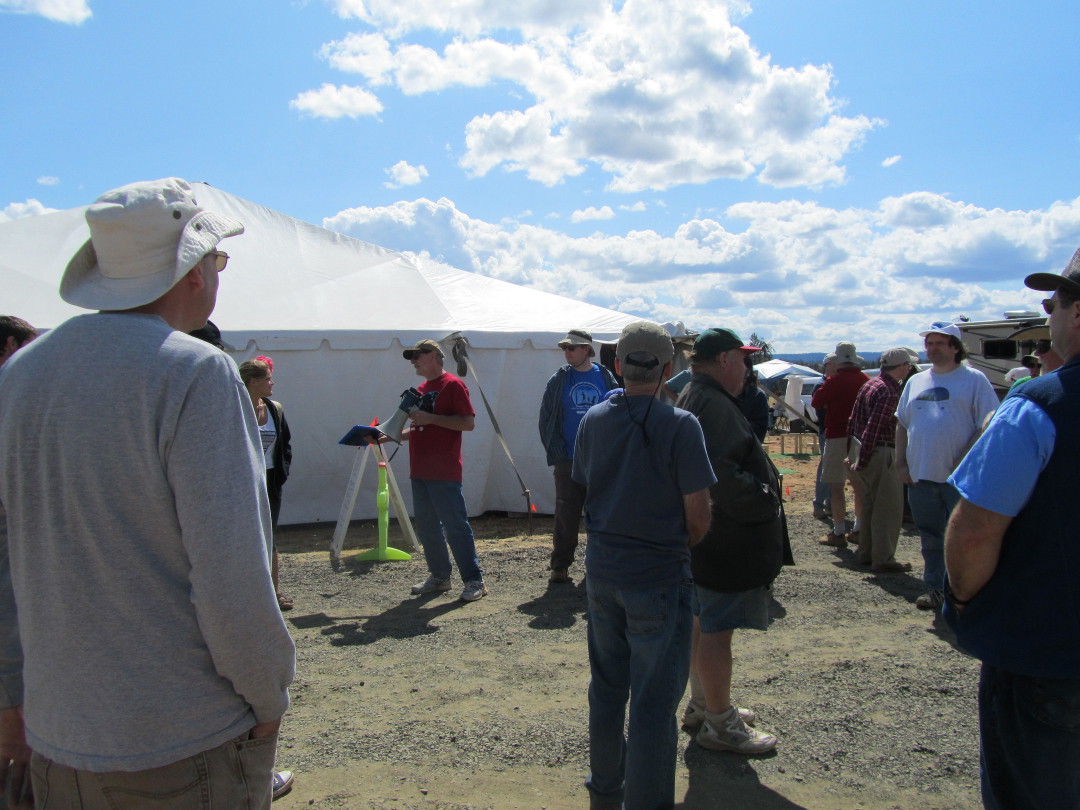
And his wife, Barbara Bajec, the walkabout photographer. Getting good
images of the telescopes without blocking people's views while the
presenter is turning to face
different portions of the crowd's perimeter and disassembling and
moving the telescope can be a real challenge.

Brett Schaerer's 13 inch [33cm] collapsing
ballscope is a marvel of integrated design. Brett, known by his
WikiKea
scope from last year's walkabout, made the ball from a lighting globe,
fiberglassing inside for strength. There's an 'infinity' or '8' sign
painted in white just like the billiard ball on the bottom of the ball
for humor's sake. The extending tubes are held in position by strings.
The ball can optionally sit on a large 'rack' shaped just like in
billiards. Brett observes sitting down.


Sophia Schaerer showed her 6 inch [15cm]
f8 reflector that she designed, including the altitude bearings, the
dust cover and the paint scheme. The bungee cords tighten movement in
altitude. Her favorite object is Saturn. She's entering fifth grade.
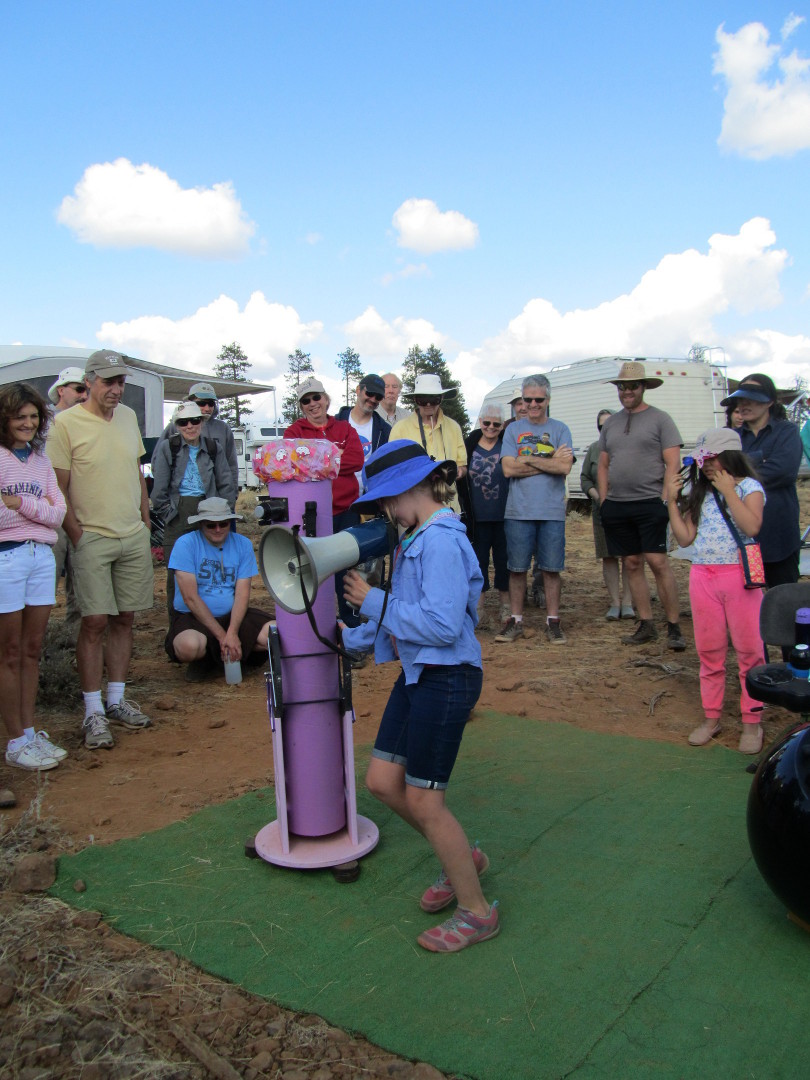
Howard Banich's 8 inch [20cm] f3.3 single
arm reflector is a testament to useful design. Inspired by the WikiKea
scope, the single arm altitude arm is stiffened by boards that act as
shelves, holding equipment. The single strut, actually two pieces of
aluminum where one slides inside the other bought from Online Metals,
tube assembly focuses by a very fine adjustment knob off the top and is
supported in the arm by Teflon pads on both sides of the altitude
circle. The pivot point in altitude can be adjusted for different
weight eyepieces. Howard started grinding the mirror in the mid 1990's
and finished with help from Steve Swayze. Howard isn't quite done with
the scope, running out of time before the star party, building it to
travel. The mirror box is a cake pan. Howard sits on an adjustable
height chair. Howard extolled the exciting wide angle views possible
with his 25mm ES and 21mm Ethos eyepieces with 100 degree fields of
view.
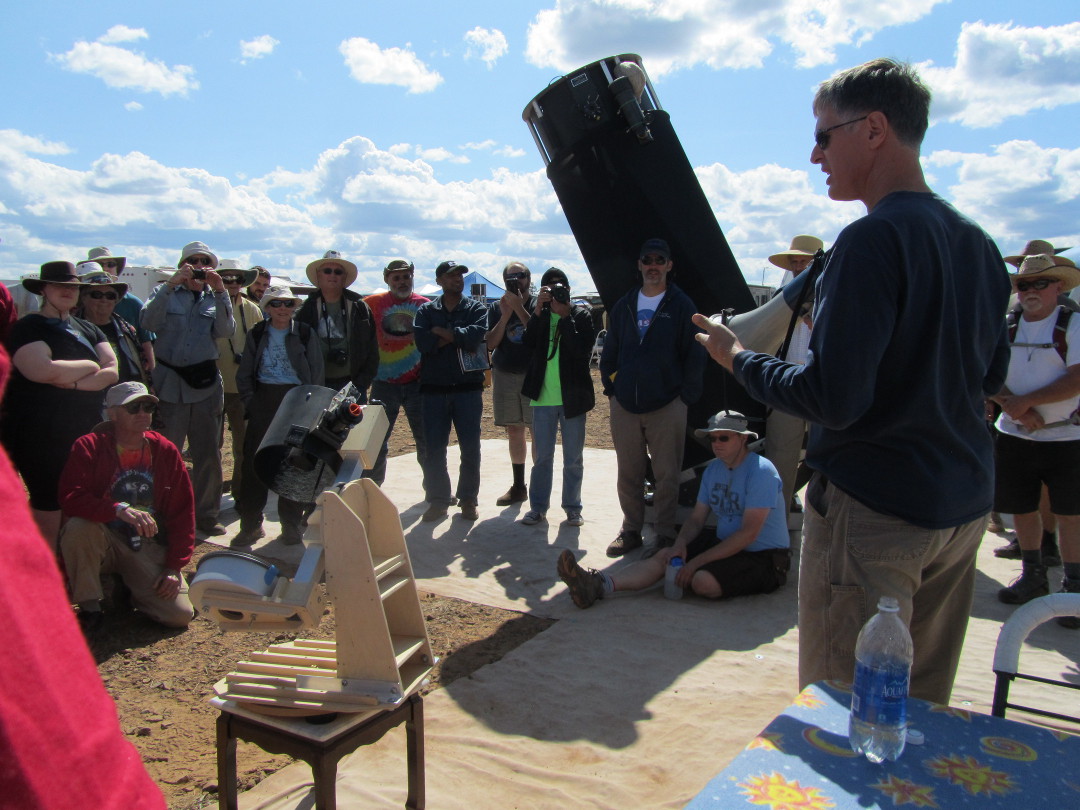
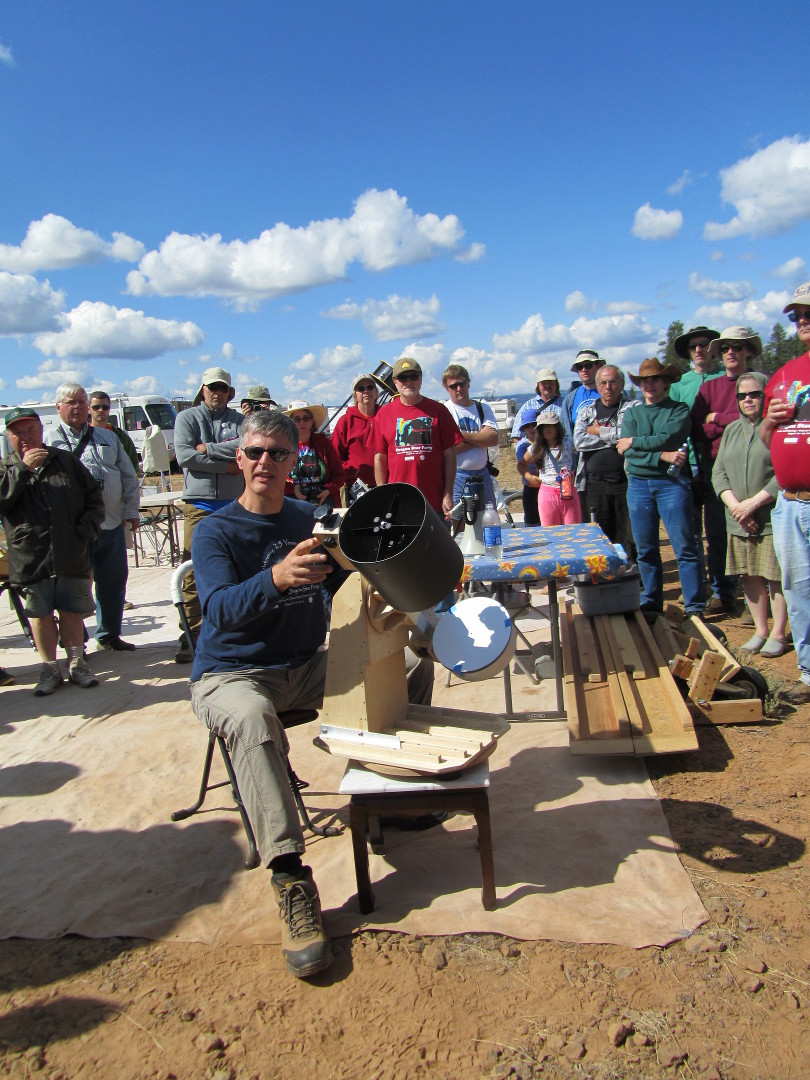
R. Miles' 12 inch [30cm] collapsing string
telescope is a marvel of woodwork. A yacht builder, Miles was inspired
by Dan Gray's string telescope innovation to build this scope. After
meeting John Dobson in San Francisco, Miles wanted to build a Dobsonian
but wanted a scope that looked nice. Miles also found inspiration in
Don Peckham's website on string telescopes. The telescope is designed
to nestle its parts as the truss tubes are removed, twisting the
strings as it collapses. The telescope travels in the front seat of
Miles' small car. The truss tubes twist to loosen in their deep well
sockets with coupler nut and are used to optically align the telescope.
The telescope as pictured uses four truss tubes but works almost as
well with only two tubes in place. The tubes are painters extension
tubes that can be purchased for far less than if buying the aluminum
from a metals supply shop. The mirror is from a recycled Zhumell
telescope.
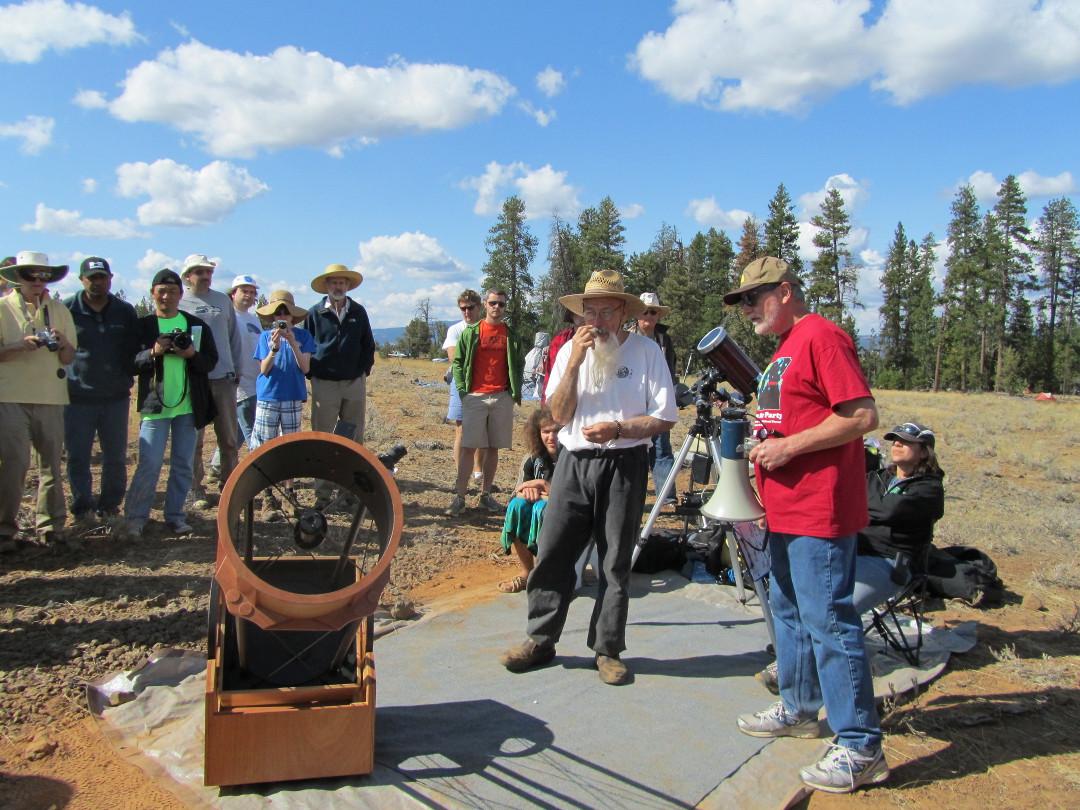

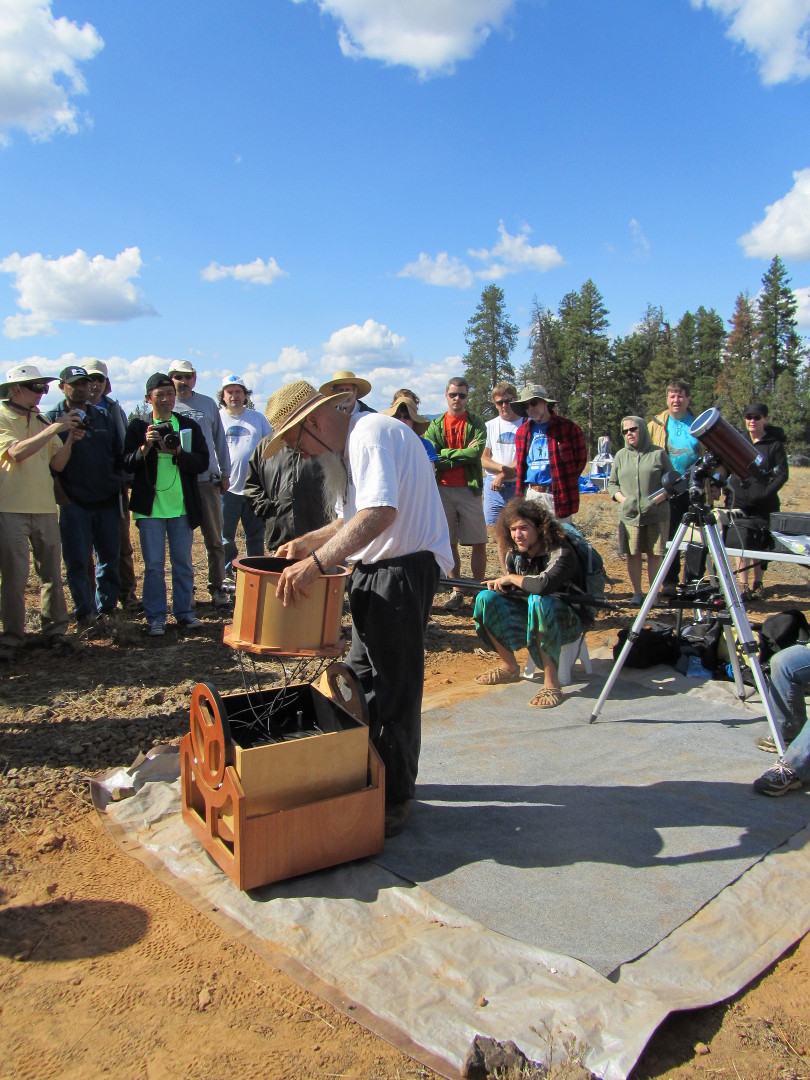
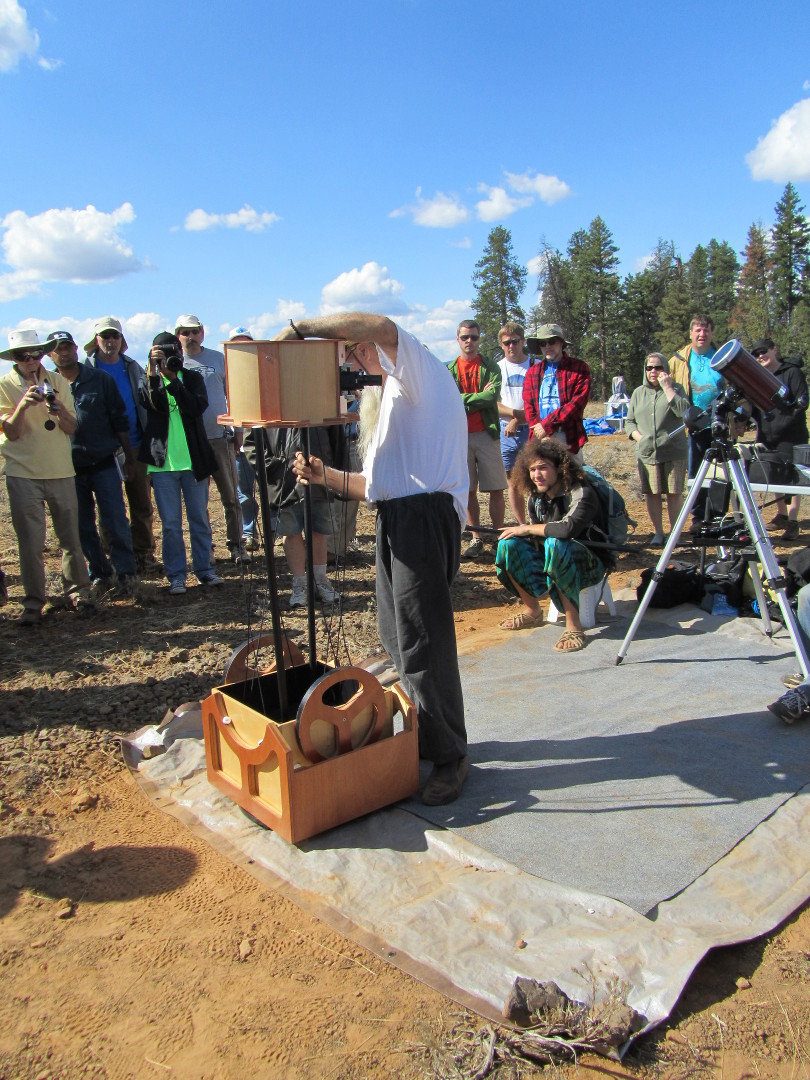
Dan Bakken's improved 41 inch [1.04m] string
telescope features carbon fiber tubes and a lighter stiffer upper
rotating end. He uses a small Dell computer mounted on a stalk that
operates a Dan Gray SiTech II controller system. The system is
extremely accurate, putting objects dead center in the field of view at
relatively high magnifications. Dan built this scope to molify his
aperture fever, not cure it. He started the f3.9 mirror in 1996. The
mirror is silicone glued (professional grade) to the 27 point support
with a spacing of 1/8 inch (wooden dowels were used for proper spacing
while the silicone cured) and gives excellent star images with no edge
or lateral support. He's switched to a wire spider and built the
minimum sized baffle for good contrast at the eyepiece so as to not be
blown about on windy nights. The focuser is a Don Clements model

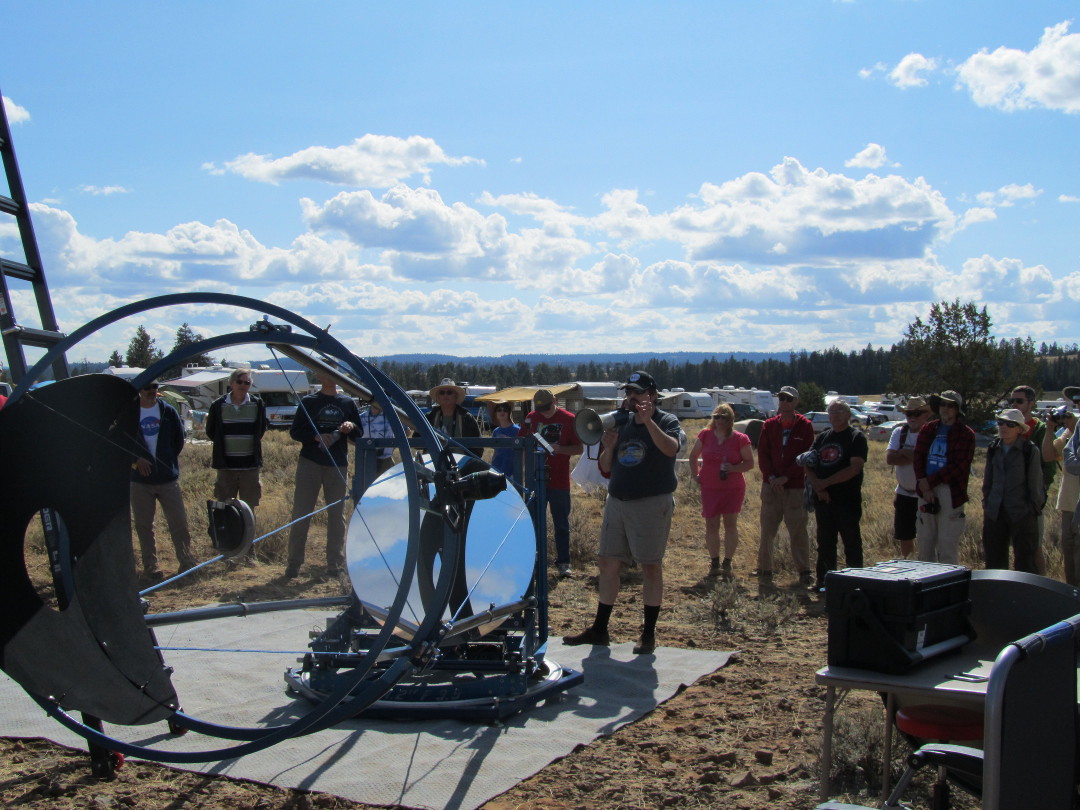

Dan Gray's el-el or alt-alt computerized imaging
telescope is the latest in computerized telescope control. The scope
moves from horizon to horizon in three seconds at a speed of 60 degrees
per second. The direct drive motors are homemade. The encoders are 26
bit absolute Reneshaws with an overall resolution of 26 million. Dan
has spent seven years working on the design to arrive at success. All
imaging is done unguided thanks to the precision pointing modeling
capability of the software.
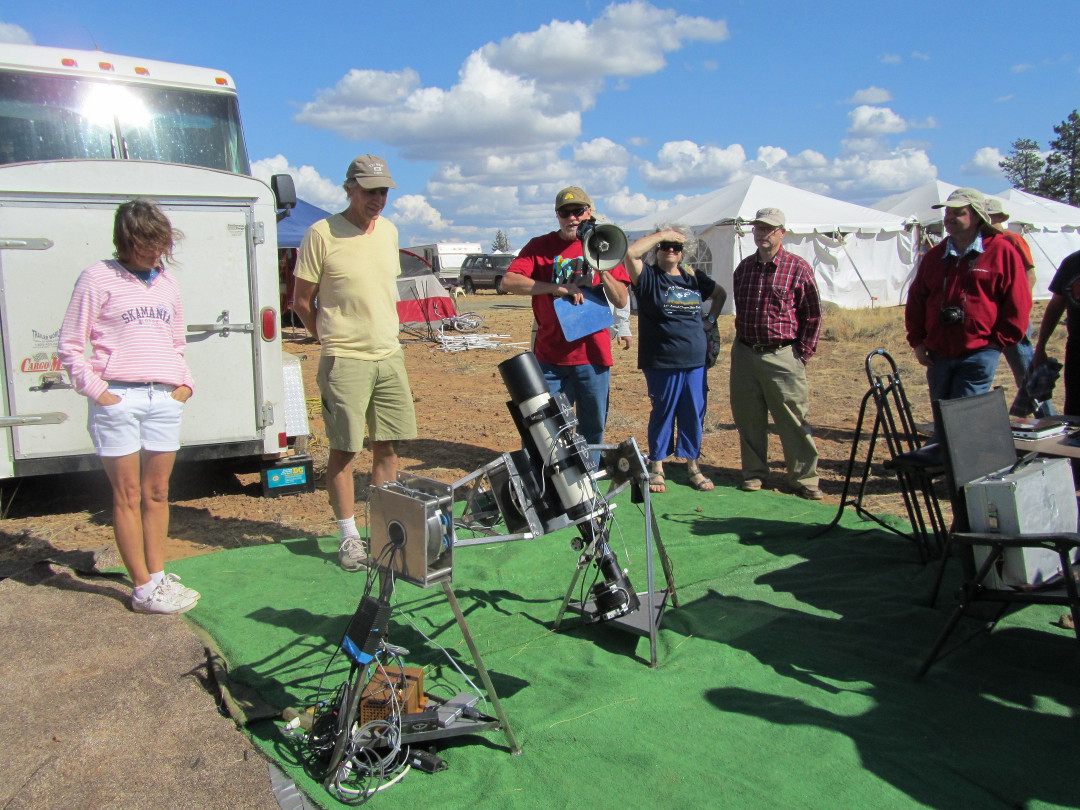
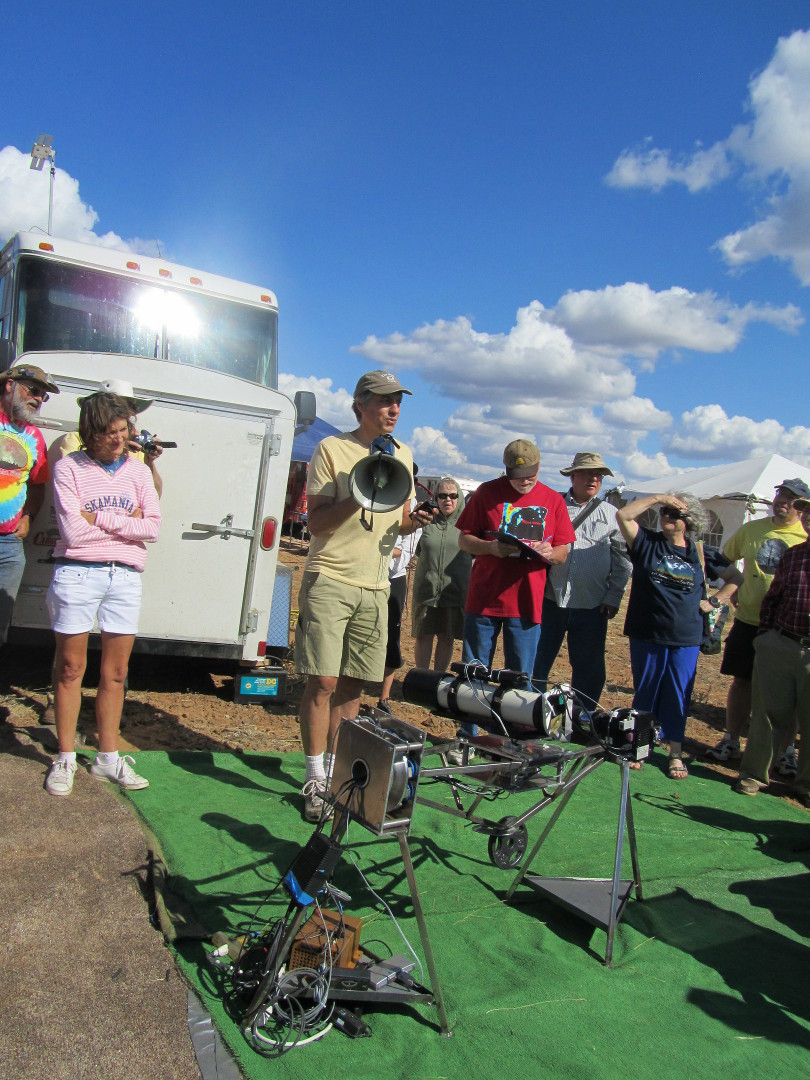
Jerry
Oltion's 12 inch [30cm] binocular telescope is a marvel of working
practicality. Jerry, a mirror maker, happened to end up with two 12
inch [30cm] mirrors on his hands that matched focal lengths to 5/8 inch
[2cm]. The telescope uses homemade focusers and tertiary mounts and a
nifty interpupillary spacing adjustment. The telescope stays aligned
and images merged as it points from horizon to zenith and from low
power to high power, thanks to Jerry's robust construction. The truss
tubes are wooden dowels. The scope sits on a flex rocker and reuses the
base from his 20.5 inch [52cm] telescope. The binocular effect proved
striking, gaining a magnitude, obvious on all objects and stars, none
more so than the galaxy cluster Hickson 84 where the bino view showed
galaxies fainter than 17th magnitude whereas a single mirror struggled
to reach 16th magnitude. The central star in M57 was visible and some
saw the second star. The Dumbbell Nebula was quite striking - one of
the best objects in the scope. Jerry entertained numerous visitors
throughout the three nights, many not able to contain their
astonishment and shouting out at the views. One person recalled a
shootout many years ago where a 12 inch binocular was matched up
against a 24 inch telescope with a binoviewer. Observers were hard
pressed to see any difference. My judgment is that the scope performed
equal to that of a 18 inch to 24 inch scope, depending on object. One
object that stood out better in Jerry's binoscope than any other scope
regardless of size was M31, the Andromeda Galaxy. The dark dust lanes
were very striking.

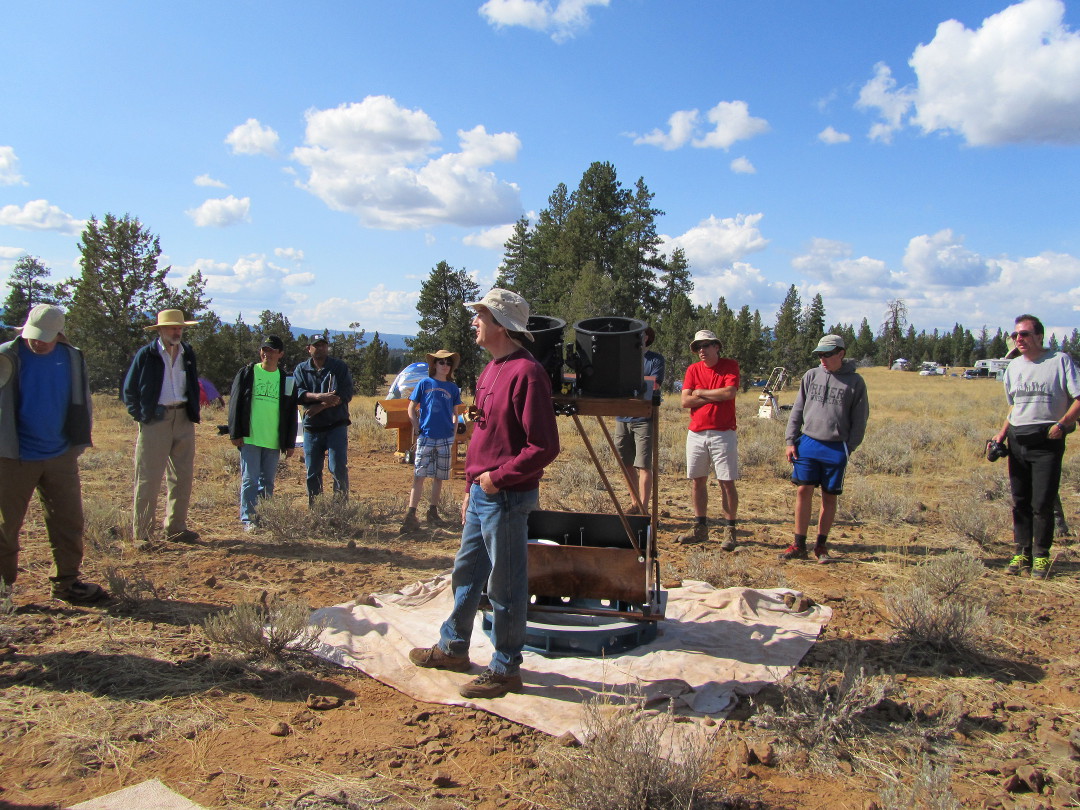
Frank Szczepanski's 4 inch [10cm]
binocular telescope is a side by side design, similar to his 8 inch
binoscope, setup nearby. One mirror is positioned ahead of the other
with a larger diagonal so that the views come out to side by side
eyepieces. Frank's telescopes are a marvel of simple inexpensive often
repurposed parts that adjust easily and stay locked into position. The
scope is a real joy to use.
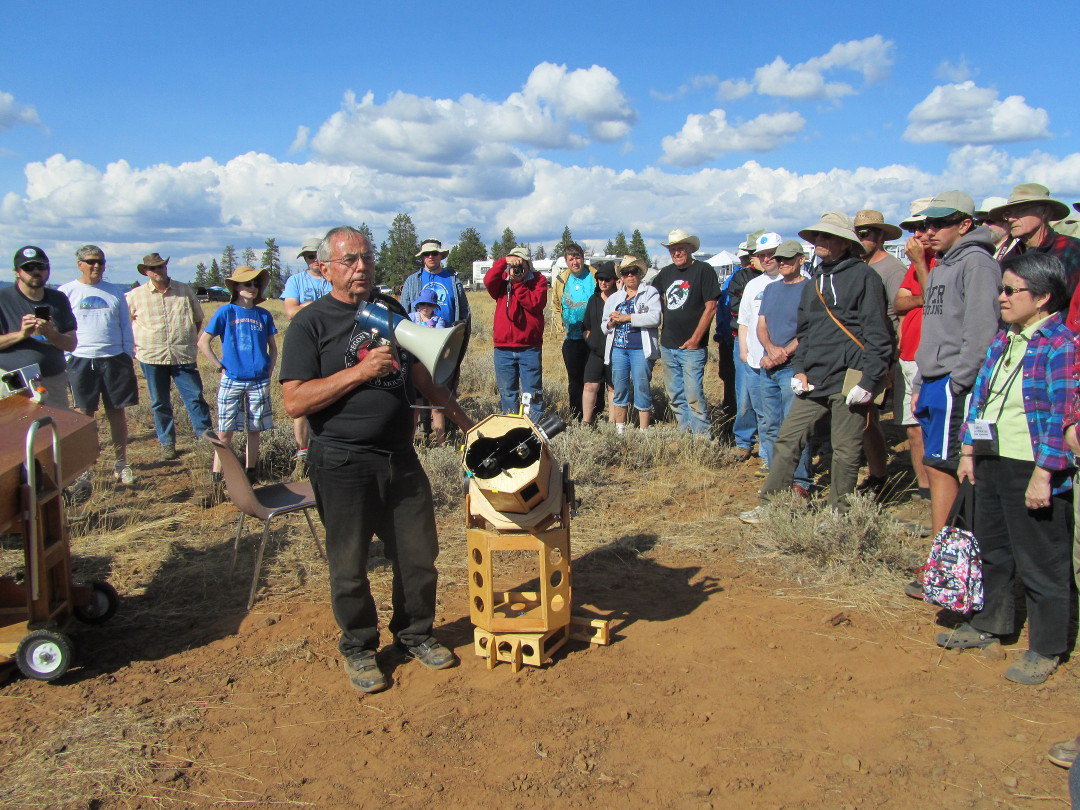
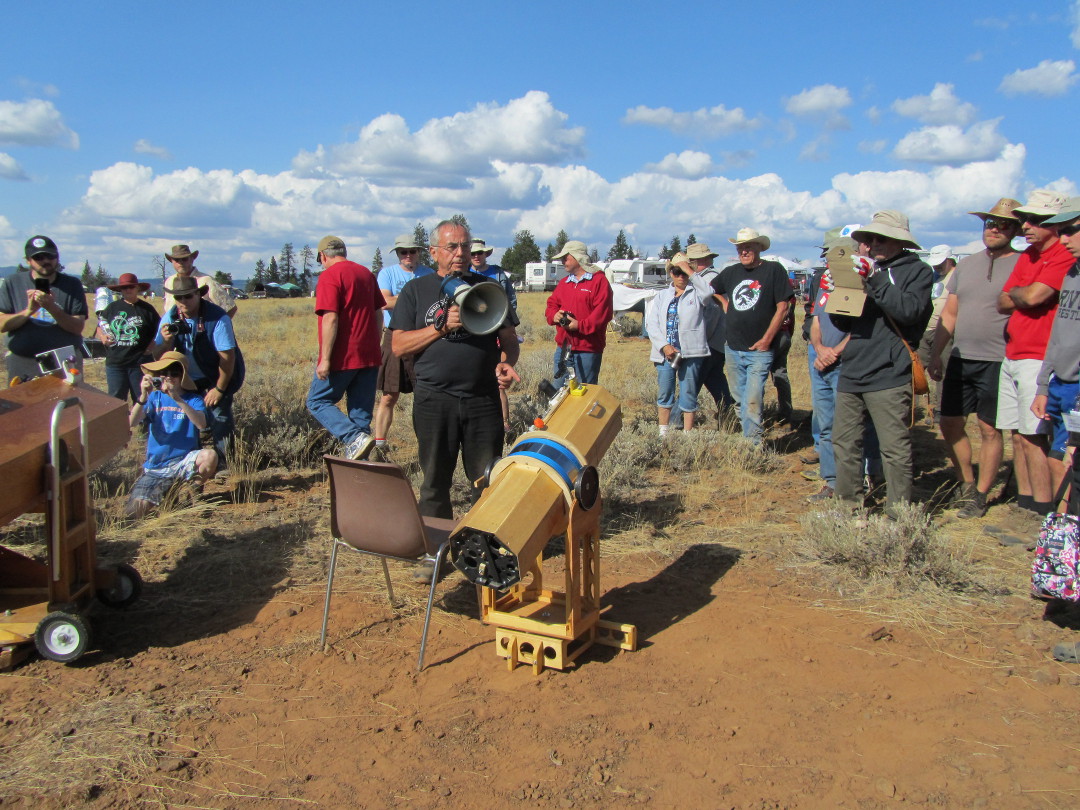
The three binocular telescopes setup together; a very rare conjunction
of binoscopes! What a marvelous and unusual treat.
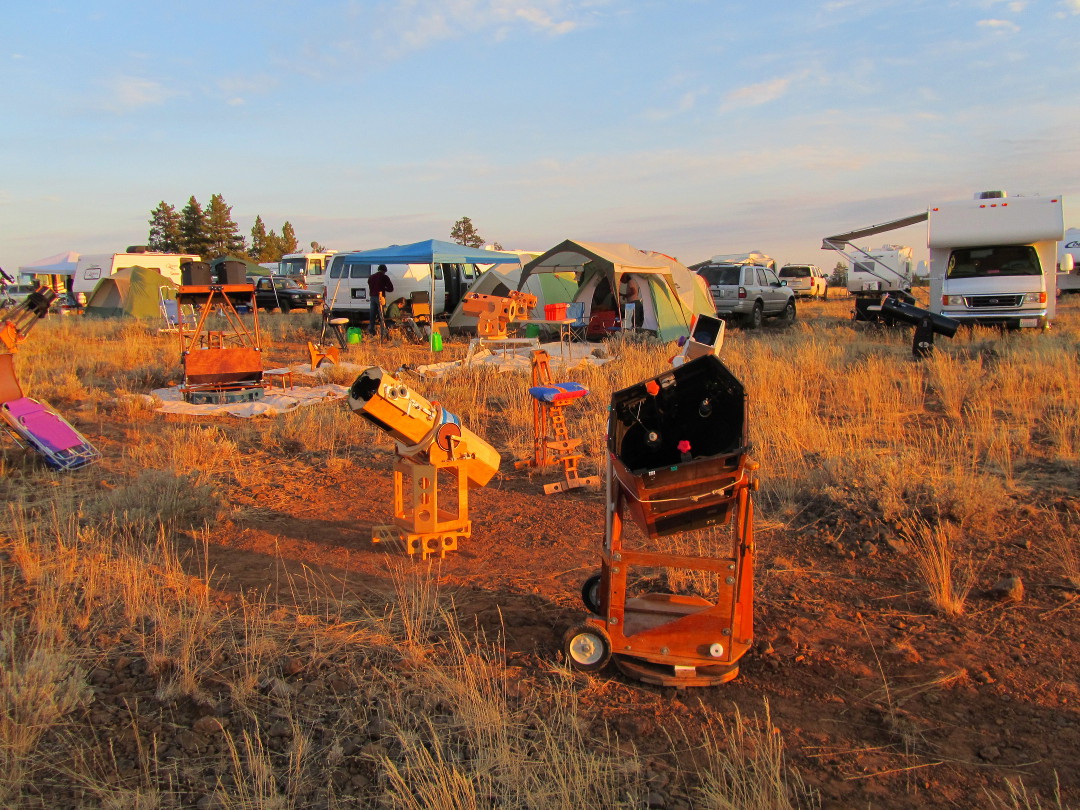
The walkabout ended with
Mel Bartels' 6 inch
[15cm] f2.8 and 10.5 inch [27cm] f2.7 reflectors. The 10.5 inch
features a meniscus plate glass mirror that cools in minutes and does
not change shape to an overcorrected shape during the very brief
cooldown. Mel mentioned several unusually fait and large objects that
he's been able to observe, not mentioned by other observers, including
the Pleiades bubble, the Andromeda Shelf, the Double Cluster wall and
the Albireo swish. These scopes were built in concert to explore sub
f3.0 mirrors and their performance. The star images are wonderfully
pinpoint sparkles all the way to the edge of the field of view in the
21mm Ethos 100 degree eyepiece. Many people stopped by and were quite
thrilled by the views combining large field with good aperture.
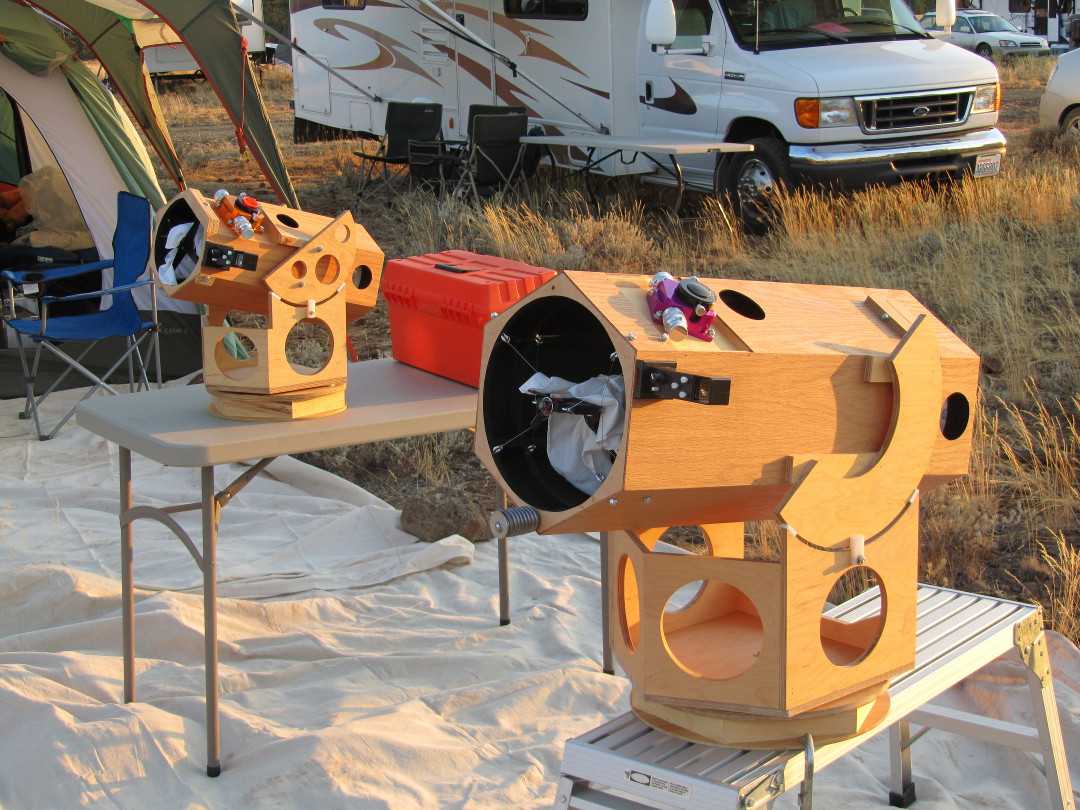
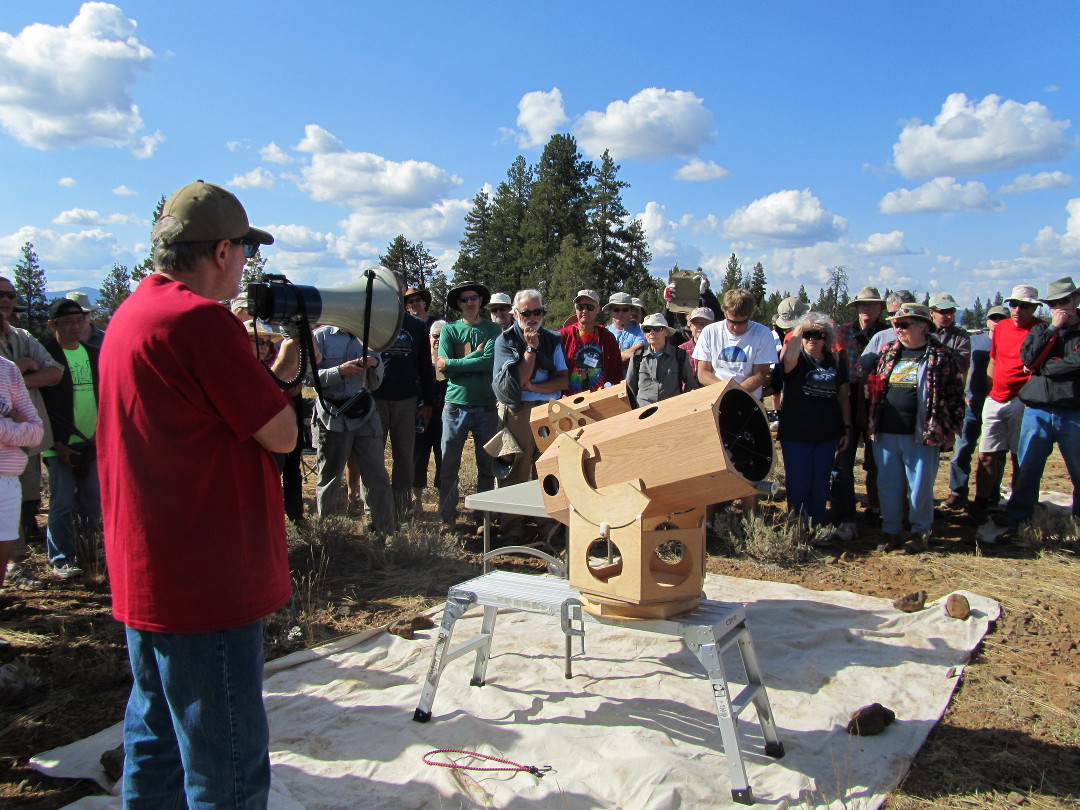
Finally, though not on the Walkabout, two interesting images of a scope
cluster and a Coulter, showing the eclectic and varied nature of
telescopes at the Oregon Star Party.



























